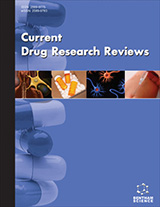
Abstract
Background: Multiple sclerosis (MS), a chronic inflammatory disorder, affects the central nervous system via myelin degradation. The cause of MS is not fully known, but during recent years, our knowledge has deepened significantly regarding the different aspects of MS, including etiology, molecular pathophysiology, diagnosis and therapeutic options. Myelin basic protein (MBP) is the main myelin protein that accounts for maintaining the stability of the myelin sheath. Recent evidence has revealed that MBP citrullination or deamination, which is catalyzed by Ca2+ dependent peptidyl arginine deiminase (PAD) enzyme leads to the reduction of positive charge, and subsequently proteolytic cleavage of MBP. The overexpression of PAD2 in the brains of MS patients plays an essential role in new epitope formation and progression of the autoimmune disorder. Some drugs have recently entered phase III clinical trials with promising efficacy and will probably obtain approval in the near future. As different therapeutic platforms develop, finding an optimal treatment for each individual patient will be more challenging.
Aims: This review provides a comprehensive insight into MS with a focus on its pathogenesis and recent advances in diagnostic methods and its present and upcoming treatment modalities.
Conclusion: MS therapy alters quickly as research findings and therapeutic options surrounding MS expand. McDonald's guidelines have created different criteria for MS diagnosis. In recent years, ever-growing interest in the development of PAD inhibitors has led to the generation of many reversible and irreversible PAD inhibitors against the disease with satisfactory therapeutic outcomes.
Graphical Abstract
[http://dx.doi.org/10.1093/brain/awy287] [PMID: 30462211]
[http://dx.doi.org/10.1016/B978-0-12-802395-2.00019-5] [PMID: 28987175]
[http://dx.doi.org/10.1038/s41573-022-00477-5] [PMID: 35668103]
[http://dx.doi.org/10.20471/acc.2018.57.02.17] [PMID: 30431730]
[http://dx.doi.org/10.1101/cshperspect.a028936] [PMID: 29358320]
[http://dx.doi.org/10.1212/01.CON.0000433291.23091.65]
[http://dx.doi.org/10.3390/jcm9103100] [PMID: 32992918]
[http://dx.doi.org/10.1002/acn3.50862] [PMID: 31392849]
[http://dx.doi.org/10.1186/s12974-019-1517-1] [PMID: 31238945]
[http://dx.doi.org/10.1186/s12974-019-1674-2] [PMID: 31870389]
[http://dx.doi.org/10.3390/ijms22147377] [PMID: 34298997]
[http://dx.doi.org/10.1152/physrev.00031.2018] [PMID: 31066630]
[http://dx.doi.org/10.1101/cshperspect.a020479] [PMID: 26101081]
[http://dx.doi.org/10.3389/fcell.2021.653101] [PMID: 33763430]
[http://dx.doi.org/10.1016/j.devcel.2021.06.006] [PMID: 34192527]
[http://dx.doi.org/10.1007/s00018-022-04428-6] [PMID: 35829923]
[http://dx.doi.org/10.1016/j.bbamem.2012.01.024] [PMID: 22326946]
[http://dx.doi.org/10.1016/j.conb.2017.09.013] [PMID: 29065345]
[http://dx.doi.org/10.3390/cells9040812] [PMID: 32230947]
[http://dx.doi.org/10.7554/eLife.44702] [PMID: 31063129]
[http://dx.doi.org/10.1016/j.neuron.2016.05.016] [PMID: 27292539]
[http://dx.doi.org/10.1007/s11064-016-1920-2] [PMID: 27097548]
[http://dx.doi.org/10.1016/B978-0-12-374947-5.00010-9]
[http://dx.doi.org/10.3389/fchem.2022.1041961] [PMID: 36896314]
[http://dx.doi.org/10.3390/cells9020470] [PMID: 32085570]
[http://dx.doi.org/10.1111/jnc.12195] [PMID: 23398367]
[http://dx.doi.org/10.1134/S0006297914060091] [PMID: 25100014]
[http://dx.doi.org/10.3390/jcm7090281] [PMID: 30223497]
[http://dx.doi.org/10.1155/2019/7592851] [PMID: 31886309]
[http://dx.doi.org/10.1021/acsomega.0c01590] [PMID: 32637820]
[http://dx.doi.org/10.1038/s41598-020-73671-3] [PMID: 33028889]
[http://dx.doi.org/10.1186/s12974-021-02360-3] [PMID: 34961522]
[http://dx.doi.org/10.1007/s00018-022-04126-3] [PMID: 35079870]
[http://dx.doi.org/10.3390/ijms24010095] [PMID: 36613560]
[http://dx.doi.org/10.3892/etm.2017.4410] [PMID: 28588671]
[http://dx.doi.org/10.3389/fimmu.2015.00192] [PMID: 25964785]
[http://dx.doi.org/10.3389/fimmu.2019.00540] [PMID: 31024521]
[http://dx.doi.org/10.3389/fimmu.2019.03088] [PMID: 32010139]
[http://dx.doi.org/10.3389/fimmu.2020.00598] [PMID: 32328067]
[http://dx.doi.org/10.3390/biom11071058] [PMID: 34356682]
[http://dx.doi.org/10.1002/bip.22127] [PMID: 23175390]
[http://dx.doi.org/10.2174/1389450116666150202160954] [PMID: 25642720]
[http://dx.doi.org/10.1186/s40246-018-0163-5] [PMID: 29933755]
[http://dx.doi.org/10.1055/s-0043-106704]
[http://dx.doi.org/10.1080/14728222.2017.1294160] [PMID: 28281906]
[http://dx.doi.org/10.1007/s10787-023-01149-5] [PMID: 36806957]
[http://dx.doi.org/10.4172/2155-9899.1000146]
[http://dx.doi.org/10.1242/dmm.010520] [PMID: 23118341]
[http://dx.doi.org/10.1002/ana.26014] [PMID: 33410190]
[http://dx.doi.org/10.1021/acs.accounts.9b00024] [PMID: 30844238]
[http://dx.doi.org/10.1016/j.cbpa.2021.01.010] [PMID: 33676233]
[http://dx.doi.org/10.1021/bi200309e] [PMID: 21466234]
[http://dx.doi.org/10.1021/cb500933j] [PMID: 25621824]
[http://dx.doi.org/10.1021/bi100363t] [PMID: 20469888]
[http://dx.doi.org/10.2174/1389450116666150202160954] [PMID: 25642720]
[http://dx.doi.org/10.1007/s00726-021-03111-7] [PMID: 34889995]
[PMID: 28367411]
[http://dx.doi.org/10.1016/j.neurol.2015.10.006] [PMID: 26718593]
[http://dx.doi.org/10.1177/2055217319841881] [PMID: 31984137]
[http://dx.doi.org/10.1186/s12883-018-1026-3] [PMID: 29523094]
[http://dx.doi.org/10.1212/WNL.0000000000007035] [PMID: 30770430]
[http://dx.doi.org/10.1016/j.msard.2022.104103] [PMID: 36029708]
[http://dx.doi.org/10.1111/eva.13167] [PMID: 33767739]
[http://dx.doi.org/10.1016/j.clineuro.2013.09.012] [PMID: 24321147]
[http://dx.doi.org/10.1016/j.pneurobio.2012.11.003] [PMID: 23201558]
[http://dx.doi.org/10.1016/B978-0-444-52001-2.00004-2] [PMID: 24507514]
[http://dx.doi.org/10.1111/imm.12233] [PMID: 24329535]
[http://dx.doi.org/10.1038/nrneurol.2014.37] [PMID: 24638138]
[http://dx.doi.org/10.3389/fneur.2018.00031] [PMID: 29467711]
[http://dx.doi.org/10.1007/s00415-022-11200-0] [PMID: 35657406]
[http://dx.doi.org/10.1002/acn3.51266] [PMID: 33338328]
[http://dx.doi.org/10.7861/clinmed.2020-0292] [PMID: 32675142]
[http://dx.doi.org/10.1038/s41598-018-29206-y] [PMID: 30022111]
[http://dx.doi.org/10.1016/S1474-4422(11)70274-5] [PMID: 22265211]
[http://dx.doi.org/10.3389/fneur.2022.1011579] [PMID: 36419536]
[http://dx.doi.org/10.1136/jnnp-2012-304140] [PMID: 23418213]
[http://dx.doi.org/10.1038/s41467-021-22265-2] [PMID: 33824310]
[http://dx.doi.org/10.1016/j.jval.2018.06.014]
[http://dx.doi.org/10.1212/WNL.0000000000012323] [PMID: 34088878]
[http://dx.doi.org/10.1101/cshperspect.a028928] [PMID: 29358317]
[http://dx.doi.org/10.1155/2015/817238] [PMID: 25802867]
[PMID: 30911233]
[http://dx.doi.org/10.1097/WCO.0000000000000195] [PMID: 25887766]
[http://dx.doi.org/10.1212/CON.0000000000001136] [PMID: 35938654]
[http://dx.doi.org/10.3390/cells8111424] [PMID: 31726662]
[http://dx.doi.org/10.3390/cells10040844] [PMID: 33917929]
[http://dx.doi.org/10.1016/j.msard.2019.101452] [PMID: 31670010]
[http://dx.doi.org/10.3389/fneur.2022.885218] [PMID: 35785363]
[http://dx.doi.org/10.1038/s41380-022-01511-z] [PMID: 35361905]
[http://dx.doi.org/10.3389/fncel.2020.00090] [PMID: 32390802]
[http://dx.doi.org/10.1155/2016/5314541] [PMID: 26941483]
[http://dx.doi.org/10.1186/s12974-015-0335-3] [PMID: 26077779]
[http://dx.doi.org/10.1097/CM9.0000000000002083] [PMID: 36525604]
[http://dx.doi.org/10.3390/cimb45020094] [PMID: 36826039]
[http://dx.doi.org/10.3389/fimmu.2021.624685] [PMID: 33679769]
[http://dx.doi.org/10.3389/fimmu.2022.996469] [PMID: 36211343]
[http://dx.doi.org/10.1007/s11481-015-9614-0] [PMID: 25946987]
[http://dx.doi.org/10.3389/fimmu.2022.817473] [PMID: 35250997]
[http://dx.doi.org/10.3389/fimmu.2018.02508] [PMID: 30429853]
[http://dx.doi.org/10.1007/s00018-017-2569-y] [PMID: 28624966]
[http://dx.doi.org/10.1101/cshperspect.a029041] [PMID: 29311129]
[http://dx.doi.org/10.1101/cshperspect.a029025] [PMID: 29358315]
[http://dx.doi.org/10.1038/s41423-020-00618-z] [PMID: 33958746]
[http://dx.doi.org/10.3389/fimmu.2012.00064] [PMID: 22566945]
[http://dx.doi.org/10.1186/s12974-017-0978-3] [PMID: 29037246]
[http://dx.doi.org/10.1016/j.msard.2020.102654] [PMID: 33302229]
[http://dx.doi.org/10.3390/biomedicines10123124] [PMID: 36551880]
[http://dx.doi.org/10.1002/cti2.1018] [PMID: 29881546]
[http://dx.doi.org/10.3389/fimmu.2017.00425] [PMID: 28458668]
[http://dx.doi.org/10.1016/j.jaut.2018.10.012] [PMID: 30509385]
[http://dx.doi.org/10.3389/fneur.2021.796378] [PMID: 35197914]
[http://dx.doi.org/10.1016/j.nbd.2023.106005] [PMID: 36680805]
[http://dx.doi.org/10.1016/j.msard.2021.103156] [PMID: 34332459]
[http://dx.doi.org/10.1016/j.molmed.2019.11.003] [PMID: 31862243]
[http://dx.doi.org/10.3390/v15030782] [PMID: 36992490]
[http://dx.doi.org/10.3389/fimmu.2012.00287] [PMID: 23060876]
[http://dx.doi.org/10.2741/s443] [PMID: 26709893]
[http://dx.doi.org/10.1155/2017/8391230] [PMID: 28553556]
[http://dx.doi.org/10.1186/s12974-020-01944-9] [PMID: 32878648]
[http://dx.doi.org/10.1101/cshperspect.a028944] [PMID: 29735578]
[http://dx.doi.org/10.1371/journal.pcbi.1005757] [PMID: 29073203]
[http://dx.doi.org/10.1002/msj.20240] [PMID: 21425266]
[http://dx.doi.org/10.1016/j.msard.2017.03.014] [PMID: 28619429]
[http://dx.doi.org/10.3389/fpsyt.2017.00047] [PMID: 28396640]
[http://dx.doi.org/10.1371/journal.pone.0221645] [PMID: 31454391]
[http://dx.doi.org/10.3389/fneur.2022.796933] [PMID: 35651353]
[http://dx.doi.org/10.1093/braincomms/fcac171] [PMID: 35813882]
[http://dx.doi.org/10.1016/j.jns.2011.09.003] [PMID: 21982346]
[http://dx.doi.org/10.1007/BF03404961]
[http://dx.doi.org/10.1177/1352458512470862]
[http://dx.doi.org/10.3389/fimmu.2022.840158] [PMID: 35309300]
[http://dx.doi.org/10.3389/fncel.2022.985943] [PMID: 36439198]
[http://dx.doi.org/10.3390/ijerph19063373] [PMID: 35329061]
[http://dx.doi.org/10.1101/cshperspect.a028951] [PMID: 29440325]
[http://dx.doi.org/10.1111/joim.13045] [PMID: 32614160]
[http://dx.doi.org/10.1007/s10048-014-0403-3] [PMID: 24770783]
[http://dx.doi.org/10.1177/1759091415568914] [PMID: 25694554]
[http://dx.doi.org/10.1111/j.1365-2990.2012.01304.x] [PMID: 22994200]
[http://dx.doi.org/10.3390/ijms21249626] [PMID: 33348854]
[http://dx.doi.org/10.1152/physiolgenomics.00060.2017] [PMID: 28754822]
[http://dx.doi.org/10.1371/journal.pgen.1002934]
[http://dx.doi.org/10.1016/j.jneuroim.2018.01.005] [PMID: 29325906]
[http://dx.doi.org/10.1101/cshperspect.a029058] [PMID: 29500303]
[http://dx.doi.org/10.3390/jpm12040549] [PMID: 35455665]
[http://dx.doi.org/10.1007/s00415-022-11488-y] [PMID: 36427168]
[http://dx.doi.org/10.3389/fimmu.2019.00726] [PMID: 31031747]
[http://dx.doi.org/10.1038/s41598-021-94423-x] [PMID: 34294805]
[http://dx.doi.org/10.1073/pnas.2011249117] [PMID: 32817492]
[http://dx.doi.org/10.2217/bmm-2017-0374] [PMID: 29865854]
[http://dx.doi.org/10.3389/fneur.2021.678035] [PMID: 35211070]
[http://dx.doi.org/10.3389/fneur.2019.00188] [PMID: 30930829]
[http://dx.doi.org/10.3988/jcn.2018.14.3.387] [PMID: 29971979]
[http://dx.doi.org/10.1111/imm.13004] [PMID: 30222193]
[http://dx.doi.org/10.1016/j.bbagrm.2013.07.003] [PMID: 23860259]
[http://dx.doi.org/10.1093/biolre/ioac173] [PMID: 36087287]
[http://dx.doi.org/10.1016/j.clineuro.2013.12.021] [PMID: 24635918]
[http://dx.doi.org/10.3390/biomedicines10123107] [PMID: 36551863]
[http://dx.doi.org/10.1177/17562864211035542] [PMID: 34457039]
[http://dx.doi.org/10.3390/ijms21124312] [PMID: 32560364]
[http://dx.doi.org/10.1007/s40263-021-00822-z] [PMID: 34228301]
[http://dx.doi.org/10.3390/cells11091578] [PMID: 35563884]
[http://dx.doi.org/10.3389/fimmu.2020.549842] [PMID: 33072089]
[http://dx.doi.org/10.1007/s13311-021-01048-z] [PMID: 33880738]
[http://dx.doi.org/10.1016/j.lpm.2021.104068] [PMID: 34033862]
[http://dx.doi.org/10.4103/ijpvm.IJPVM_477_17] [PMID: 31921403]
[http://dx.doi.org/10.1212/WNL.0000000000002745] [PMID: 27170571]
[http://dx.doi.org/10.3389/fphar.2022.807639] [PMID: 35250559]
[PMID: 27928949]
[PMID: 24707183]
[http://dx.doi.org/10.3390/ijms23073615] [PMID: 35408975]
[http://dx.doi.org/10.3389/fphar.2020.00537] [PMID: 32390854]
[http://dx.doi.org/10.3390/ijms23158658] [PMID: 35955792]
[http://dx.doi.org/10.2119/molmed.2013.00159] [PMID: 24869907]
[http://dx.doi.org/10.15283/ijsc17052] [PMID: 29699380]
[http://dx.doi.org/10.3389/fneur.2022.874211] [PMID: 35734473]
[http://dx.doi.org/10.1111/jnc.12744] [PMID: 24762056]
[http://dx.doi.org/10.3390/ijms20092174] [PMID: 31052493]
[http://dx.doi.org/10.1016/j.bmc.2007.10.021] [PMID: 17964793]
[http://dx.doi.org/10.1021/jm2008985] [PMID: 21882827]
[http://dx.doi.org/10.1021/cb200258q] [PMID: 22004374]
[http://dx.doi.org/10.1074/jbc.M112.375725] [PMID: 22605338]
[http://dx.doi.org/10.1016/j.bmc.2013.12.064] [PMID: 24440480]
[http://dx.doi.org/10.1021/bi500554b] [PMID: 24989433]
[http://dx.doi.org/10.1021/acs.biochem.8b00852] [PMID: 30513201]
[http://dx.doi.org/10.3389/fimmu.2021.716250] [PMID: 34737738]
[http://dx.doi.org/10.1021/acs.jmedchem.7b00274] [PMID: 28328217]
[http://dx.doi.org/10.2217/nmt-2021-0058] [PMID: 36314777]
[http://dx.doi.org/10.1021/bi700095s] [PMID: 17497940]
[http://dx.doi.org/10.3389/fcimb.2019.00227] [PMID: 31316918]
[http://dx.doi.org/10.1038/nchembio.1735] [PMID: 25622091]
[http://dx.doi.org/10.1038/s41598-018-33385-z] [PMID: 30323221]
[http://dx.doi.org/10.3390/ijms19061625] [PMID: 29857489]
[http://dx.doi.org/10.1021/bi061180d] [PMID: 17002273]
[http://dx.doi.org/10.1159/000448808] [PMID: 27622642]
[http://dx.doi.org/10.1016/j.intimp.2020.106923] [PMID: 32889238]
























